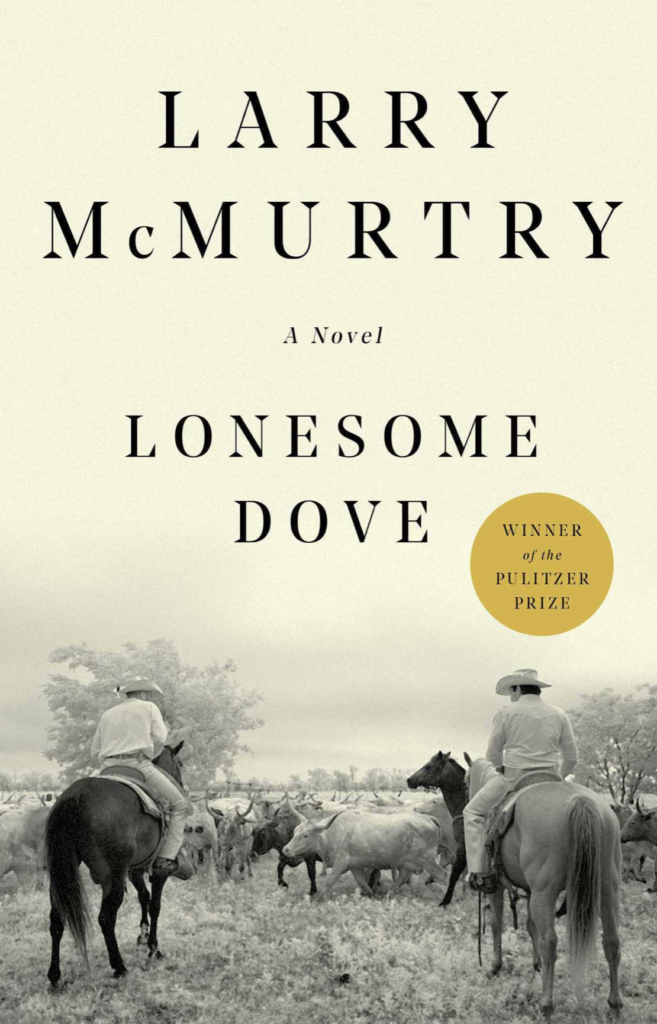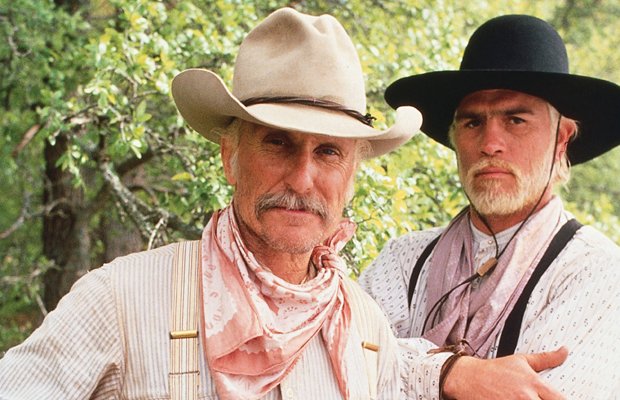I’ve led my book club down many risky reading paths over the past twenty years. Sometimes, my choices arouse vociferous resistance and when I’ve led the group astray, I readily beg forgiveness. But more often than not, trying something out of our comfort zone is rewarding and serves to remind us why we love to reading together.
I’m hoping that’s the case when we gather (virtually?) in two weeks to discusss Larry McMurtry’s Pulitzer Prize-winning masterpiece, Lonesome Dove. It’s literally a brick, an 850 page paperback that you would not take on an airplane or a road trip! Fortunately, most of my crew stayed home this holiday season (thanks, Omicron).
I adored this book and am here to proselytize: Lonesome Dove is the perfect Omicron antidote! In the four days it took me to read, I could think of nothing else. I didn’t want to put it down or wake up from the story of Gus McCrae and Woodrow Call and their ill-fated cattle drive from Texas to Montana. During our recent rainy days and right through an extremely muted New Year’s Eve weekend, I sank into the couch in a literary trance. I found myself slowing down as I got to the end of over 100 chapters (!) to extend my time with the most rag-tag bunch of cowboys ever imagined.
McMurtry’s beloved novel seems to have had a resurgence during quarantine – perhaps folks are looking back on classics they hadn’t read, or were inspired (as I was) to learn more about Larry McMurtry after reading his obituaries last March. Mention the novel to anyone and they will tell you they adore this book, even if they haven’t read it for nearly thirty years. Many Dove fans mention Wallace Stevens’ description of a rare type of reading experience in which “the reader becomes the book” – that is, a state in which words and pages melt away and you and the story are one. That was me on the couch.
Lonesome Dove has been described as an anti-western Western because it undercuts our mythology of cowboys and Indians. McMurtry regularly throws convention aside in his storytelling; he’s a realist not a sentimentalist, he creates female characters who are as fully formed (and interesting) as the men, and offers up scenes of beauty and brutality in nearly equal measure. You can imagine a soaring soundtrack as you read, and feel the rain or wind or sand as you march alongside this motley crew. And you will have your heartbroken. Repeatedly. And when I was done, I was not ready to ride on.
Here are additional resources I recommend:
- Watch the original miniseries of “Lonesome Dove” on Amazon Prime- it’s wildly dated, but Robert Duvall is incandescent as Gus McRae. The networks made further films and sequels but none are worthy. Tommy Lee Jones plays the other lead and Danny Glover, Diane Lane, and Angelica Houston round out the cast which was comprised of TV and film actors.
- Listen to a terrific podcast about the miniseries and the book from Chris Ryan and Andy Greenwald of The Watch. These tv critics are book lovers first and during early quarantine days read all the Lonesome Dove books and watched the miniseries and then compared and contrasted for their audience, offering insight and reverence that deepened my knowledge and appreciation.
- Read more about McMurtry (here is his obit in the NYT and here is the LATimes version) his connections to Hollywood (he wrote “The Last Picture Show” and “Terms of Endearment” and more including an Oscar for the screenplay of “Brokeback Mountain”). Fun fact: Lonesome Dove was first written as a screenplay, conceived as a vehicle for Jimmy Stewart and John Wayne’s last cowboy movie, by McMurtry and Peter Bogdanovich (who also recently died). The stars said no, and McMurtry turned the script into the Pulitzer Prize winning novel.
- Invest your time in reading all four books in the Lonesome Dove series – they are not written in chronological order, so check out this article on how to read them. I’ve yet to do this, but it’s if Omicron sticks around all winter, you know where I”ll be.
- Investigate the history of the American West in literature, starting with this article by Geoff Dyer.
- Note The Autry has a “What Is a Western? Film Series” with screenings this month of three movies: “The Outsiders”, “Boyz in the Hood”, and “Lonely Are the Brave”. And here is their online resource page on this topic, with archived interviews.



